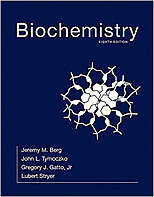
Biochemistry
Berg, Jeremy M.; Tymoczko, John L.; Gatto, Jr., Gregory J.; Stryer, Lubert
8 ed.
New York: W.H. Freeman and Company, 2015
 |
Biochemistry Berg, Jeremy M.; Tymoczko, John L.; Gatto, Jr., Gregory J.; Stryer, Lubert 8 ed. New York: W.H. Freeman and Company, 2015 |
43 termes
| IDL n. (intermediate-density lipoprotein) |
|
| IF1 n. (inhibitory factor 1) |
|
| IGS n. (internal guide sequence) |
|
| immediate donor n. |
|
| in singulo method n. |
|
| induced pluripotent stem cell n. (iPS cell) |
|
| induced-fit model n. |
|
| inhibitor binding n. |
|
| inhibitory factor 1 n. (IF1) |
|
| initiation factor n. |
|
| initiator element n. (Inr) |
|
| Inr n. (initiator element) |
|
| insulin insufficiency n. |
|
| insulin release n. |
|
| insulin resistance n. |
|
| insulin signaling n. |
|
| insulin-dependent diabetes n. (type 1 diabetes) |
|
| insulin-receptor substrate n. (IRS) |
|
| interatomic distance n. |
|
| intercellular communication n. |
|
| internal ribosome entry site n. (IRES) |
|
| intracellular energy charge n. |
|
| intramolecular hemiacetal n. |
|
| intramolecular hemiketal n. |
|
| intramolecular rearrangement n. |
|
| intrinsic pathway n. |
|
| intrinsic reactivity n. |
|
| intrinsically unstructured protein n. (IUP) |
|
| inverse PCR n. |
|
| ion semiconductor sequencing n. |
|
| ionic interaction n. |
|
| IP3 n. (inositol 1,4,5-trisphosphate) |
|
| iPS cell n. (induced pluripotent stem cell) |
|
| IRE-binding protein n. (IRP) |
|
| IRES n. (internal ribosome entry site) |
|
| iron center n. |
|
| irreversible inhibition n. |
|
| IRS n. (insulin-receptor substrate) |
|
| isoform n. |
|
| isomeric form n. |
|
| isomerization reaction n. |
|
| isotope labeling study n. |
|
| IUP n. (intrinsically unstructured protein) |
|